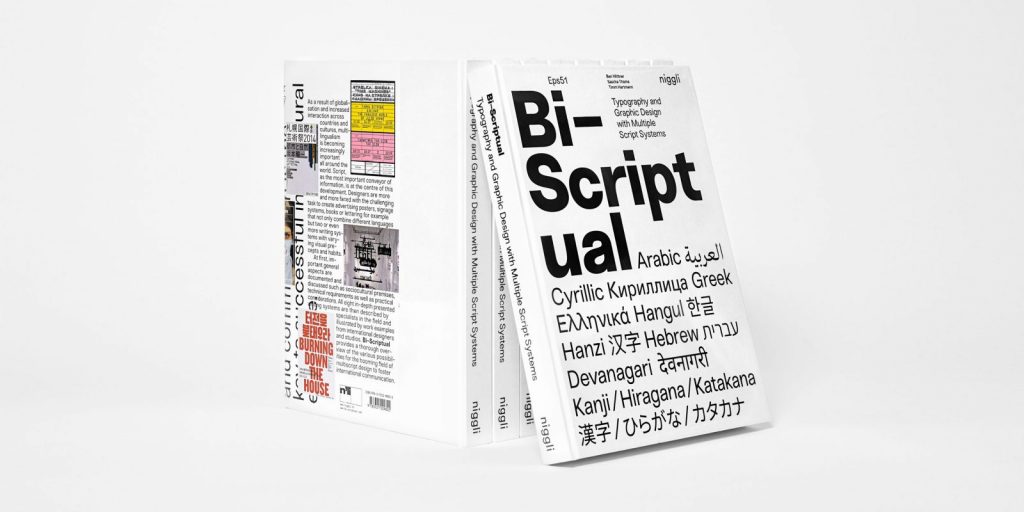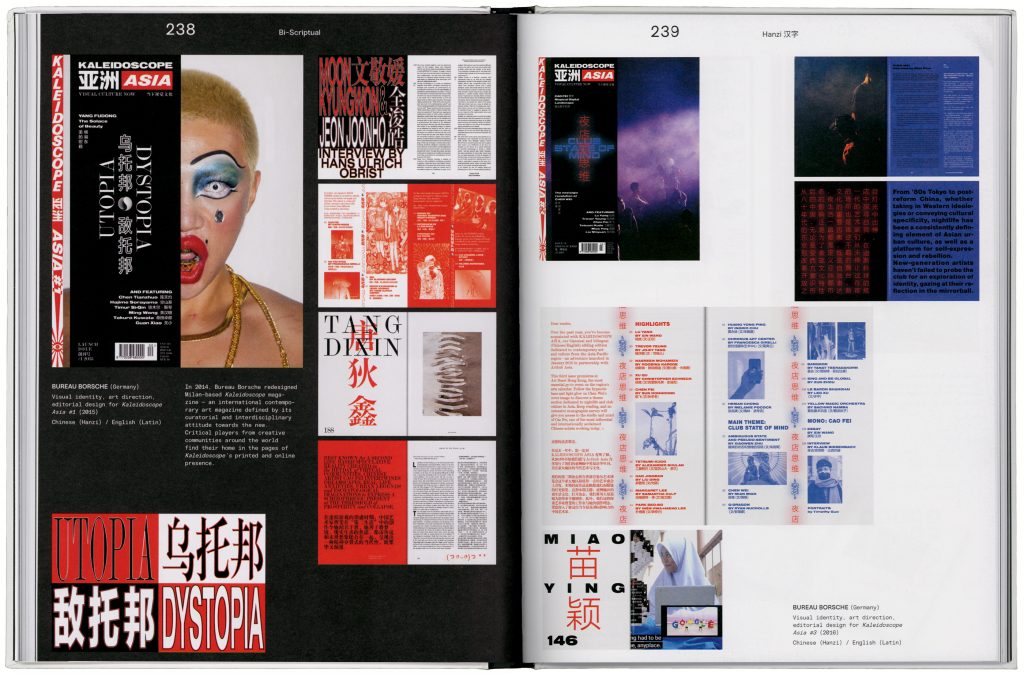

Bi-Scriptual
Script is language. Language is communication, and communication is the key to successful intercultural exchange.
Client
Self initiated
Year
2017
Services
Book
Concept
Redaction
Editing
Organisation
Background
As a result of globalisation and increased interaction across countries and cultures, multilingualism is becoming increasingly important all around the world. Script, as the most important conveyor of information, is at the centre of this development. Designers are more and more faced with the challenging task to create advertising posters, signage systems, books or lettering for example that not only combine different languages but two or even more writing systems with varying visual precepts and habits.
The book Bi-Scriptual documents and discusses sociocultural premises, technical requirements and practical considerations concerning multiscript design and typography. All eight in-depth presented writing systems are then described by specialists in the field and illustrated by work examples from international designers and studios. Bi-Scriptual provides a thorough overview of the various possibilities for the booming field of multiscript design to foster international communication.
Published by
Niggli
Website
www.bi-scriptual.com
Buy here


By working simultaneously with two or more script systems designers communicate clear social and political signals.


As designers it is our job to learn and understand socio-cultural contexts and visually communicate them – and to make them intelligible for all.








Scripts / Languages:
Arabic, Cyrillic, Greek, Hangul (Korean), Hanzi (Chinese), Hebrew, Devanagari (Hindi), Kanji / Hiragana / Katakana (Japanese)


Expert texts by Adi Stern, Eugene Yukechev, Gerry Leonidas, Huda Smitshuijzen AbiFarès, Jeongmin Kwon, Keith Tam, Kristyan Sarkis, Lara Captan, Liron Lavi Turkenich, Mariko Takagi, Peter Biľak, Vaibhav Singh Devanagari






All featured writing systems are described with extensive texts by international experts covering topics from the historical background, functionality and design advice to showing bilingual approaches.


The book includes typographical works from over 120 designers including Guang Yu, Homa Delvaray, Ishan Khosla, Maria Doreuli, Nadine Chahine, Oded Ezer, Peter Bankov, Rikako Nagashima, Sulki And Min, Typical Organization, Wang Zhi-Hong




All chapters are extensively illustrated with texts, interviews, artists’ statements and work samples by designers and studios from around the globe.












